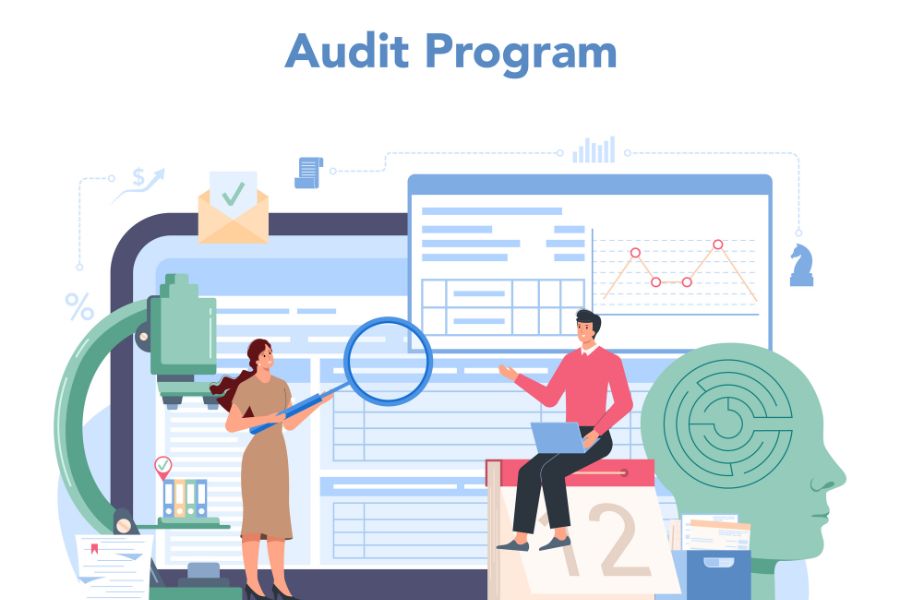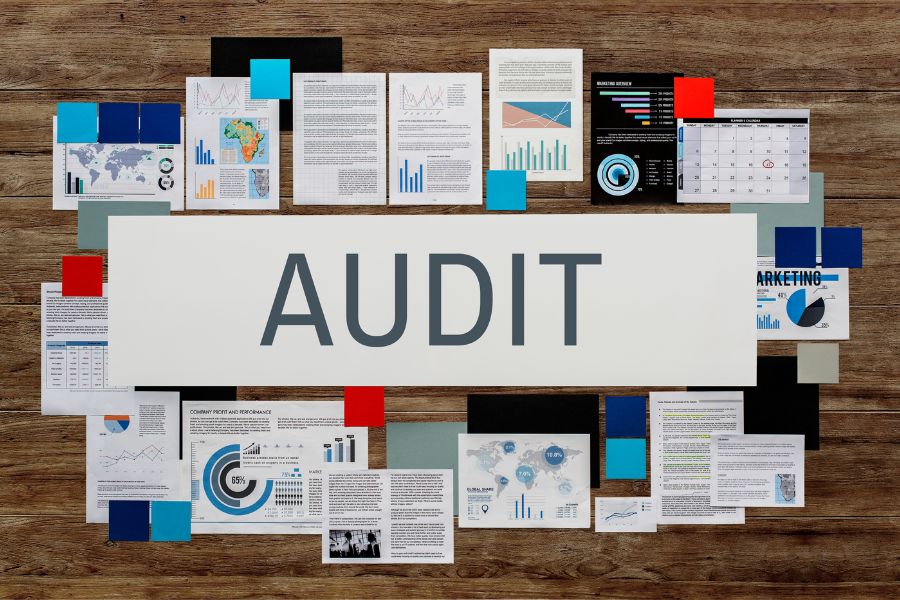Unlock the Secrets of Content Auditing: Boost Your Website’s Performance
What is a content audit?

Content creation is a never-ending process. Content is the only medium to stay connected and relevant to your audience. Thus, it has to be accurate, consistent and thorough. You must have observed how constantly and readily content is created and uploaded. However, the process of content generation doesn’t end there. There is always room to do more. That’s where content auditing comes into the picture. Often not given its due importance, but we at Write Ink believe it to be an indispensable tool in the content journey, and here today to unlock the secrets of content auditing to boost your website’s performance!
In simple layperson’s terms, auditing can be explained as reviewing, verifying and evaluating something for accuracy and enhancement. Audits are prevalent in various fields, and content is no exception. You are probably already practising content auditing; you are just not aware of the nitty-gritty of it. Content auditing is quintessentially the cataloguing, categorising, analysing, reviewing, verifying and evaluating the content already present on your website. It is checking up on all you have already put up on your website for your audience. We all agree that uploading content on your website is a constant process, and often, we fail to realise that we end up cluttering the space too much by hoarding content. Content auditing helps in reviewing the content and checking if its qualities meet the required parameters, and based on them, it can be kept, updated, or removed. If done well, it will only help boost your website’s performance.
Why is a content audit important?

Content is essentially a marketing component; all your content is created to target an audience, inform them, and convert them into potential customers. Content becomes your sales magnet; thus, this magnet’s efficiency is determined by the quantity and quality of content, as it helps create impressions and perceptions about your brand. With this mindset, we publish content on websites. However, we need to remember that the audience that we cater to through our content is diverse, dynamic and prone to change. In this fast-evolving world, change is the only constant. Thus, your content must constantly match steps with the changing surroundings, audience and happening. Content auditing helps in this. As you review the performance of your content, you measure what’s working and what’s not and accordingly take steps to ensure smooth functioning, which helps stay relevant, dynamic and diverse with your content.
Content auditing helps understand the loopholes, scope for improvement, your strengths, the audience’s perception, etc, which can be incorporated into your content later. Revising and reviewing your content before publishing is a mandate; however, let us tell you that doing it after publishing your content is equally necessary. Simply posting your content won’t help; that’s not the only purpose. The purpose is to create a repository that caters to the audience’s needs. Content auditing ensures a certain gatekeeping so that the purpose of creating content is never lost.
Benefits of conducting a content audit

Data is that one-of-a-kind master key. Content auditing provides invaluable data related to your content, which can not be found anywhere else. It may be a tedious process, but the benefits are multifold. It helps you to stand apart. While one analyses the content during content auditing, it is majorly from the audience’s perspective, what’s working and what’s not working for them. When put to use, the data you gain from this analysis helps you tune your further strategies to fit the audience’s needs exactly. If you are creating something for the audience, it has to meet their needs; content audit unlocks that secret for you. The Internet may give you tons of information, but every website, brand and its particulars are unique. That subjectivity is the USP; when analysed and evaluated well and results are used, it can do wonders.
Content auditing can help you understand how well a particular type, category or variety of content works better. It enables you to gauge the performance of your content and understand the gaps between the introduction of your brand and conversion into potential customers, which can be bridged later and help you make informed decisions that favour your business. The conversion and click-through rates for every content are readily available and can help improve those statistics if studied well. From the title to the headings, subheadings, actual content offered, and SEO optimisation, everything is thoroughly checked in content auditing, which helps one understand the lacunas and fill them, repurpose, update or remove. Also, content auditing gives a fair idea of content that can be further added to this repository that you have created for your brand. Streamlined, high-performing content has innumerable benefits, and content auditing helps you achieve that consistently.
Step-by-step guide to conducting a content audit

After understanding the details of content auditing, it’s time to get into the basics of it and give you a systematic step-by-step guide to conducting good content auditing.
Step 1
The first step is to identify and revisit the business goals you want to achieve through your content.
Step 2
Next is to figure out the purpose of content auditing. Is it to check your content’s performance, conversion rate, and click-through rates or to identify gaps, check for SEO optimisation, gauge audience perception to help further content strategise, streamline your content, increase user engagement, etc? The goals can be extensive, but ensure you decide on them well in advance and check if they align with your business goals.
Step 3
Collect all the content you intend to audit and bring them to one place, making it easy to access and smoother the process. Do you want to check the blogs, articles, product descriptions, videos, etc? Try using Google or Excel Sheets to keep it more systematic and assessable.
Step 4
Dive into the process! Match the metrics you ascertained with the content you decided to audit. If you want to check SEO optimisation for content, analyse it through keyword analysing tools and get the results. Take notes, observe and study the results thoroughly. SEMrush, Google Analytics, Google Search Console, etc, are some tools available online to aid you in the content auditing process. There are various content audit websites that one can use.
Step 5
Once you have collected the data, organise them and start interpreting and drawing relevant conclusions from them as per the metrics you had consolidated right at the beginning.
Step 6
Once the observations are drawn, and it’s right in front of you, you get a thorough idea of the performance of your content; it is time to make an action plan and execute all that is necessary to be done to revamp your content game. Is it needing an update, repurposing or removing, or is it fit to stay up on your website? Make the decision and act based on the precise data you just collected.
Step 7
Once the audit findings are, try implementing them to strategise your further content strategies based on the recent data-backed findings. You are indeed a step ahead already now with your content vigilance! Repeat the process whenever needed; ideally, content auditing once or twice a year is mandatory to stay relevant, effective and efficient with your content.
Analysing website analytics and metrics

After getting a step-by-step guide for content auditing, it is imperative to understand the components that can be checked when conducting an audit. Website analytics and metrics should be studied, which we discussed in Steps 4&5, to realise your goals of content auditing. Website analytics and metrics have a lot of components that determine the success of your content; all these components, when catered to as per requirements, instantly drive your website’s performance.
Looking at page views helps to check the website traffic; one can also check the source of the traffic, whether it’s direct, indirect, organic, email-based, etc, which can then be put to use to form content accordingly. The stay time and bounce rate concerning content help get an idea of the content that is working and is not. Keyword analysis is essential to ensure higher visibility and ranking on search engines. Return rate, shares, conversion rate and click-through rates are critical parameters to ascertain the factors driving the actions, which can be incorporated into the content. There are various other metrics that, when studied well, help get an overall idea, allow addressing the pain points, and enhance audience experience by modifying content.
Identifying underperforming content

Content auditing is very beneficial in identifying the underperforming content. They are hazardous for your website performance as they can repel the audience away owing to dissatisfaction and unpleasant experiences in content consumption. Checking page visits, shares, comments, bounce rates, time on page, exit points, conversion rates and other metrics helps. Content with fewer backlinks, duplicated and outdated facts, weak SEO optimisation, and other criteria qualify content as underperforming. The identification is essential, but that’s also tricky simply because the audience may not receive what may seem perfect. The audience decides what performs well and what doesn’t, so analysing the content through these metrics helps you identify the lacunas and determine whether the content can be updated, repurposed, or removed.
Updating and optimising existing content

Often, updating and optimising the existing content helps boost website performance. The world is constantly evolving and changing, so your brand must match steps with the change. The audience is also continually adapting to these changes, reflected in their constantly evolving needs and requirements. Your brand matching steps with this consistent change is reflected in your content. Thus, you must keep updating and optimising your existing content to stay relevant so the audience can stay connected. Checking for errors and facts and incorporating trending and popular keywords, titles, and headlines can help instantly update your already published content. It helps in higher traffic, visibility and ranking as search intent has gained prominence in search engines; thus, if your content qualifies that evolving search intent, it will only be displayed in search results.
Creating a content strategy based on the audit findings

By now, you must have realised the importance of content auditing. However, it not only helps to evaluate the performance of your already published content, but the findings can also be used to create an effective content strategy for your further content endeavours. Content auditing gives you a deep insight into what is and is not working in a very data-backed manner; thus, conclusions can be drawn effectively. When incorporated into your content strategy, these invaluable findings make the content creation process much more worthwhile, with increased chances of striking with the audience. For example, if a content audit shows that fact-based blogs are not performing well and humour-based blogs are performing and visiting more, strategising your further content based on humour can help.
Tools and resources for conducting a content audit

Content auditing may seem to be a daunting task. But the good news is that today, a plethora of content audit websites are available with various analytic metrics to make our work easier and provide effective results. Google Analytics is a saviour, a comprehensive tool that gives you valuable insight into multiple facets of data. SEMrush, Ahrefs, and Google Search Console give you a detailed analysis of your SEO criteria. Hemingway Editor provides a detailed report on the readability of your content, which helps you determine and tune your content to maximise ease of reception and consumption. Screaming Frog is yet another renowned tool for content auditing.
Conclusion

Content creation is not easy, but not impossible, given the resources and tools available today. We at Write Ink believe content auditing is a super power and should be used at its best to reap effective results. Write Ink provides effective content solutions for your brand. Visit our social media handles and website to know more.
FAQ: Frequently Asked Questions
1. How often should I conduct a content audit?
Conducting a content audit biannually ensures your content remains relevant and effective. Utilize specialized tools such as Google Analytics or SEMrush to streamline the audit process and gain comprehensive insights into your content’s performance.
2. Can I conduct a content audit manually?
While it’s possible to conduct a content audit manually, utilizing specialized tools like Google Analytics or SEMrush offers more comprehensive insights and streamlines the auditing process, saving time and effort.
3. How can I measure the success of my content audit?
The success of a content audit can be measured through various metrics including increased website traffic, higher levels of engagement, improved conversion rates, and enhanced search engine rankings. These metrics provide tangible evidence of the effectiveness of your content strategy.
4. What are common pitfalls during a content audit?
Common pitfalls during a content audit include overlooking certain types of content, focusing solely on quantitative metrics without considering qualitative factors, and failing to act on the findings generated from the audit.
5. Is it necessary to involve multiple stakeholders in the content audit process?
Yes, involving multiple stakeholders such as content creators, marketers, and SEO specialists ensures a comprehensive analysis and buy-in for implementing recommended changes based on the audit findings.
Image Reference: Freepik
Disclaimer: All trademarks, logos, and brand names are the property of their respective owners. All company, product, and service names used in this website are for identification purposes only. Use of these names, trademarks, and brands does not imply endorsement.







